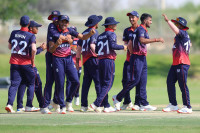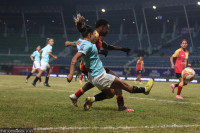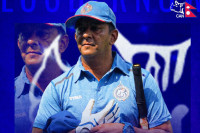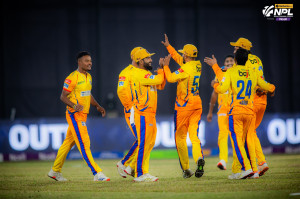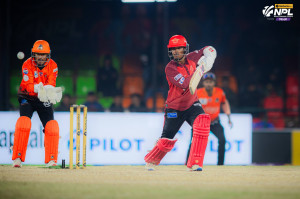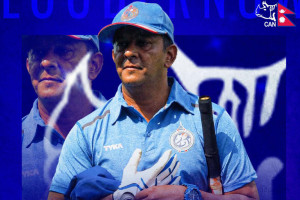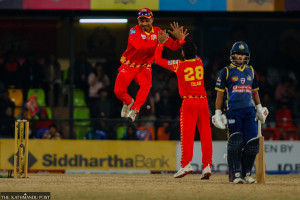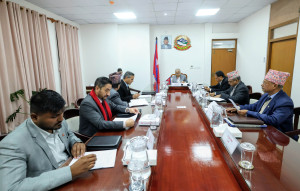Sports
Japan troubles Nepal despite defeat as teams meet after 25 years
Japan’s recent performances show that the country is now emerging in cricket with solid investment in the sport.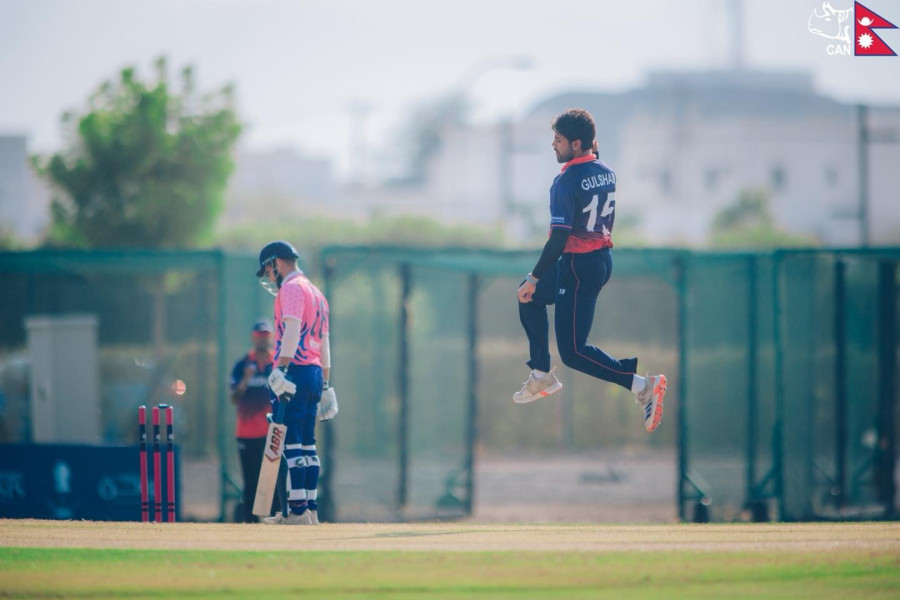
Post Report
On November 21, 2000, Nepal were facing Hong Kong in the semi-final of the 3rd ACC Trophy at Sharjah Cricket Stadium in the UAE. It was the first game of Nepal which was broadcast live on Star Sports with former Pakistani cricketer Ramiz Raja in commentary.
Raja, during the innings break after Hong Kong posted 268/3, had some Japanese cricketers in the commentary box. When Raja asked them about the way they grabbed a cricket bat, their demonstration reflected the grip of a baseball bat. It showed that Japan was still learning cricket.
Baseball, with its history in Japan dating back to 1859, is one of Japan’s most-loved sports. Cricket, despite being introduced in the island nation in the late 1990s, is still seeking a bigger recognition there.
However, on October 9, Japanese cricket, an emerging squad in the international stage, stunned the cricketing world after defeating Kuwait, one of the known names in Associate cricket, by five wickets, while chasing 178 runs in the Asia & EAP Qualifier. The win propelled them to the Super 6, increasing Japan’s chance of debuting in the T20 World Cup, which is being co-hosted by India and Sri Lanka next year.
Further, they troubled Nepal, an Associate which has established itself as a team with high possibilities of becoming a future heavyweight in the sport, on Friday, and cemented their abilities.
Japan were invited to bat first after Nepal won the toss. They lost an early wicket, but still made a quality start. Abhishek Anand (1 off 8) was victim to a direct hit by Dipendra Singh Airee in the second ball of the fourth over.
However, opener Kendel Kadowaki-Fleming, who is Japan’s only player with over 1,000 runs in T20Is, shared a crucial 71-run partnership with in-at-three Esam Rahman (31 off 25). Kadowaki-Fleming, who has scored over 1,500 runs for Japan since his debut in 2022, went on to complete his half-century. By the time he got out, he had scored 60 off 46 with the help of three sixes and five fours.
Japan’s skipper Kadowaki-Fleming’s wicket, which was a result of a spectacular catch by Nepal’s skipper Rohit Kumar Paudel in the delivery of Gulshan Kumar Jha, marked their downfall. The other seven batters could only add 26 runs afterwards and take the total to 131/8.
Jha and Sandeep Lamichhane bagged two wickets each, while Sompal Kami and Nandan Yadav picked one each.
The target looked easy. But Japan did not let it be so.
Japanese bowlers took care of Nepal’s top and middle order, making the Rhino Army fear a major upset. Kushal Bhurtel, Aasif Sheikh, Paudel, Sundeep Jora and Kushal Malla departed for 21 off 21, 38 off 21, 18 off 19, 5 off 7 and 4 off 6, respectively.
The chase, which seemed difficult at one time, was made possible by Airee and Jha, who shined with both bat and ball by the end of the game.
Airee played a calm knock scoring 14 off 14 with only one four. Jha, on the other hand, smashed two sixes and a four to win it for Nepal with 28 off 20 deliveries. Nepal completed the chase with two overs and five wickets in hand.
The win gave Nepal an additional two points before entering the Super 6 stage. The Rhinos, who will face the other four teams from two groups in a single round-robin format in Super 6, will begin the next stage with two points in hand. The top three teams from the Super 6 will qualify for the 2026 World Cup.
Nepal-Japan’s cricket history
Japan and Nepal started international cricket’s journey together, from the first edition of the ACC Trophy in 1996. They met each other in their second fixture of the tournament, and when Nepal chased Japan’s target of 73 runs in 15 overs and won by eight wickets, it marked Nepal’s first international win.
Nepal’s second encounter in Japan was in the 2nd ACC Trophy hosted in the Himalayas in 1998. However, the fixture was abandoned due to rain; even the toss did not take place.
But in the 3rd edition in 2000, Nepal defeated Japan by seven wickets in the group stage. After that, Japan left the ACC territory and started playing in the East Asia Pacific (EAP) region. Thus, Friday's match saw the two teams meet after 25 years.
Japan investing highly in cricket
Japan’s major sports include football, baseball and volleyball, alongside traditional sports of sumo and martial arts. Cricket does not have a big fan base yet.
Nonetheless, Japan is trying to make cricket famous.
In 2018, the Japan Cricket Association introduced a five-year (2018-2022) strategy under the title “Building a Brighter Future”, under which they qualified for the U19 World Cup, redeveloped Sano City International Cricket Ground and formed a cross-party parliamentary group to support the sport, among others.
Their second five-year strategy (2023-2027) aims to recognise cricket as a flourishing sport in the country by attracting new fans, participants and partners through competition on the world stage. The dream could be realised if Japan, who are now in the Super 6 stage of the Asia & EAP Qualifier, can be one of the three teams that book their berth in the 2026 main event.




 7.12°C Kathmandu
7.12°C Kathmandu
